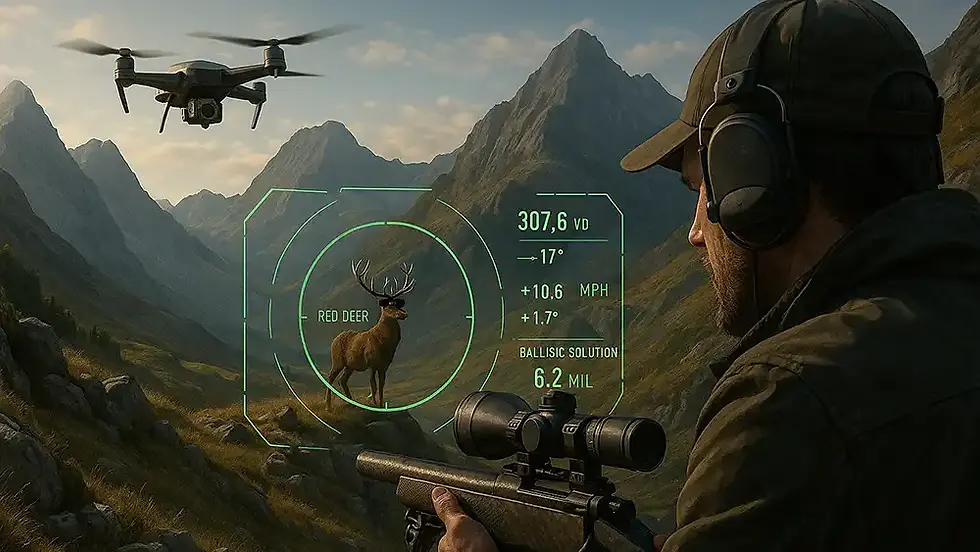The Art of Waiting – A Hunting Virtue in Transition
- Nika ARC
- Sep 19
- 3 min read

Waiting. Silence. Listening. For generations of hunters, this was the very essence of the hunt – a time of pause, of focus, of complete devotion to the moment. Those who pursued chamois, red deer, or roe deer knew: not the rifle, not the binoculars, and certainly not technology determined success or failure, but patience. The art of waiting was more than a means to an end – it shaped the hunter’s character and defined his or her relationship with nature.
In the Past: Time as the Core Resource
Older hunters speak with shining eyes of the hours, sometimes even days, they spent quietly in the hunting grounds. Every whisper of wind was noted, every crack in the undergrowth sharpened their ears. A shadow might be nothing more than a squirrel darting past – or the first sign of the long-awaited quarry. This vigilant, mindful waiting honed the senses and allowed the hunter to become one with nature.
Patience was not a burden but part of the adventure of hunting. Those who learned to endure the tension experienced the hunt in its purest form: a dialogue with nature that allowed no shortcuts.
Today: Technology as an Accelerator
Modern hunting looks different. Time has become a scarce resource. Work, family, obligations – the hours in the field are often reduced to a minimum. What used to be a long sit in the hide is now a “quick round” after work..
And with this shortage of time, technology has stepped into the foreground. Thermal imagers and night-vision devices have revolutionized the stalk. A quick glance through the scope – and the game is identified, without long periods of scanning, without the uncertainty of waiting. Yet with every technological advance, a piece of the hunting thrill fades away. The pounding heart at a faint crack in the thicket, the guessing game whether that silhouette in the dusk is a buck or just a branch – all of it vanishes.
The Psychological Dimension: The Loss of the Senses

Waiting is not a passive state. It demands patience, discipline, and the ability to sharpen one’s senses. Those who spend hours in the hunting stand learn to distinguish sounds, interpret movements, and attune themselves to the rhythm of the forest.
This tuning into nature has not only hunting value, but also psychological significance: the mind finds peace, and the hunter becomes part of the greater whole.
If this school of waiting is lost, so too is a measure of hunting intuition. Technology replaces instinct, the senses grow dull. Instead of trusting one’s own eyes and ears, dependence on screens and batteries takes hold.
Between Tradition and Modernity
NOf course, no one wishes to condemn technological achievements outright. They can make hunting safer and, in some situations, indispensable. But the core remains: hunting is more than just quickly spotting and shooting game. It is a way of learning patience, practicing humility, and encountering oneself.
Young hunters in particular should not see the art of waiting as “wasted time,” but as a treasure worth preserving. Only those who can endure silence and patience will experience the full depth of the hunt.
The Silent Test
The art of waiting is a silent test imposed upon us hunters – one we should not skip out of convenience. Technology may make many things easier, but it cannot replace the feeling that has accompanied us for centuries: that tingling in the stomach, that quickened heartbeat, when somewhere in the thicket an animal takes a cautious step.
It is precisely these moments that make hunting unique. Moments that cannot be rushed. Moments that teach us that true hunting does not lie in the pull of a trigger, but in the endurance of the moment.
And sometimes, it does good to simply leave the thermal imager and the smartphone at home – to rely once more entirely on one’s own senses and to experience the hunt as it was always meant to be: primal, honest, and rich with every facet of silence.




Comments